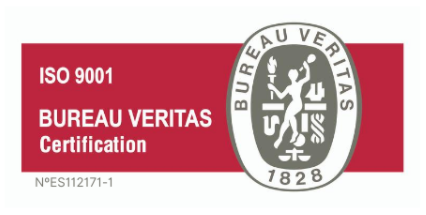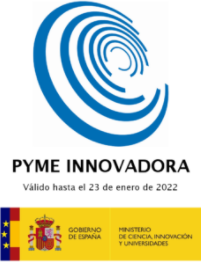La trazabilidad en el sector alimentario, en el sentido más amplio, es la capacidad para seguir el recorrido de todo lo que le ocurre a un producto alimentario, y por extensión a cualquiera de sus componentes, desde su origen hasta que llega al consumidor final. Implica la identificación, registro y seguimiento de cada etapa del proceso, incluyendo la fabricación y manipulado, transporte, almacenamiento y venta del producto.
La trazabilidad tiene como objetivo garantizar la seguridad alimentaria, la calidad y autenticidad de los productos, y proporcionar información transparente y confiable a los consumidores. Es una herramienta clave para prevenir riesgos sanitarios y ambientales, facilitar la gestión de crisis, mejorar la eficiencia y competitividad de los negocios, y cumplir con las regulaciones locales e internacionales.
Si te dedicas profesionalmente a este sector, te recomendamos antes de leer el artículo conocer el Sistema MES para el sector alimentario que te ofrecemos en MESbook.
Por qué es tan importante la trazabilidad en el sector alimentario
La trazabilidad es un elemento clave dentro del sector alimentario, ya que permite rastrear el origen y la historia de los alimentos desde su producción hasta su consumo a través de toda la cadena de suministro. Esto es fundamental para garantizar la seguridad alimentaria y la salud pública.
En caso de emergencia; un brote de enfermedades transmitidas por alimentos o contaminación, alergias no declaradas u otros problemas, la trazabilidad facilita la identificación rápida del origen del problema y permite una respuesta rápida y precisa para retirar los productos afectados del mercado y prevenir la propagación de enfermedades. Esto también es clave para mitigar el impacto negativo en la reputación de las empresas.
La trazabilidad ayuda a garantizar la calidad del producto, ya que permite a los productores, fabricantes y distribuidores mantener un registro detallado de las condiciones de producción, almacenamiento y transporte, permitiendo identificar y corregir errores en recetas o posibles problemas en la cadena de suministro.
El seguimiento proporciona transparencia y confianza a los consumidores al permitirles conocer el origen y la historia de los productos que compran, lo que puede influir en sus decisiones de compra.
La trazabilidad es también un requisito legal en muchos países, y las empresas que no cumplan con los estándares establecidos pueden enfrentar sanciones y dañar su reputación. En este sentido, la implementación de un sistema de trazabilidad eficiente es un factor clave para trasladar la confianza a los clientes, mejorando así la competitividad aquellas empresas del sector alimentario más avanzadas en la gestión de Calidad.
Entre las herramientas/operativas de trabajo clave para mejorar la trazabilidad en este sector estacan: la adopción de tecnologías de identificación y seguimiento (código de barras, RFID..), la estandarización de los procesos y una comunicación fiable entre las diferentes partes de la cadena de suministro.
También es importante promover la formación y la conciencia de los trabajadores, y fomentar la transparencia y la comunicación entre los diferentes agentes.
Es necesario trabajar en la mejora continua de los sistemas de trazabilidad en el sector alimentario para garantizar su eficacia, primero, y avanzar en su ejecución más eficiente.
Tecnologías 4.0 como los sistemas ciberfísicos/MES o blockchain, son la respuesta para garantizar la fiabilidad de tu sistema de Calidad y Trazabilidad, permitiendo el registro digital a cada movimiento físico u actividad realizada sobre el producto fabricado, de una manera casi automática, además.
Tipos de trazabilidad alimentaria
La trazabilidad de los alimentos es la capacidad de rastrear un producto desde su origen hasta su destino final, lo que permite identificar su trayectoria e historia en todas las etapas de la cadena alimentaria.
Existen diferentes tipos de trazabilidad alimentaria que pueden ser aplicados de acuerdo a las características específicas del producto y el tipo de industria.
- La trazabilidad hacia atrás: se refiere al seguimiento del producto desde su destino final hacia atrás hasta su origen y fabricación. Esta trazabilidad puede aplicarse para verificar la calidad del producto y las materias primas involucradas, asegurar que cumplió con las normas de seguridad alimentaria y controles de Calidad, en todas las etapas de producción y para garantizar su retirada del mercado en caso de que se presente una potencial alerta sanitaria.
- Hacia adelante: consiste en el seguimiento del producto desde su origen hacia su destino final, lo que permite conocer el canal de distribución y posibilita la retirada del producto en caso de detectar algún problema.
- Interna: se refiere al seguimiento del producto en todas las etapas de la cadena productiva, lo que implica mantener un registro detallado de cada una de las etapas del proceso de producción con información detallada sobre las circunstancias en las que se ha fabricado el producto: Personal involucrado, línea de fabricación, resultados de los controles de calidad, acciones correctivas ante cualquier no conformidad, paradas de producción que puedan haber afectado a la calidad del producto, lotes de materia prima y su cantidad utilizados en su fabricación, momento de cambio de lote, limpiezas, etc.
- La trazabilidad total: es la combinación de todas las anteriores, lo que permite tener un registro en tiempo real del movimiento del producto en toda la cadena alimentaria. Este tipo de trazabilidad resulta cada vez más importante debido a la globalización del mercado de alimentos y a la creciente demanda de los consumidores de productos de los que se pueda demostrar que son seguros y de calidad.
Cómo funciona un sistema de trazabilidad adecuado
Un sistema de trazabilidad en el sector alimentario adecuado es aquel que permite garantizar la seguridad y el seguimiento de los alimentos y que se ajusta a las normas establecidas por las autoridades sanitarias.
El sistema de rastreabilidad funciona a través de la recopilación y registro de información sobre cada etapa del proceso de producción, desde su fabricación hasta la distribución y venta.
Para ello, se utilizan sistemas de identificación, que permiten etiquetar cada producto con información relevante como el lugar y fecha de producción, el proveedor, el lote y la fecha de caducidad, y registros en papel o electrónicos que permitan realizar el seguimiento de las acciones principales realizadas sobre un producto.
Estos datos se almacenan en una base de datos que permite hacer un seguimiento completo de cada producto, y en caso de que se detecte algún problema, se puede proceder a retirarlos de manera rápida y eficiente.
Es por eso que el sistema de trazabilidad se convierte en una herramienta importante en la detección y prevención de amenazas para la salud y es clave fiabilizar este sistema por medio de la automatización que por ejemplo te ofrece un sistema MES/MOM.
Una herramienta MES/MOM, además permite reducir de manera significativa los costes indirectos dedicados a:
– la captación y gestión de todos los datos que son necesarios para tal fin.
– el análisis de resultados, identificación de No conformidades y su resolución.
Permite también mejorar la eficiencia a la hora de realizar un ejercicio de trazabilidad, clave por ejemplo cuando hay una reclamación por parte del cliente o auditoria, y crítico ante una potencial o real alerta alimentaria.
En definitiva, un sistema de trazabilidad en el sector alimentario adecuado es esencial para garantizar la calidad, seguridad y el control de los alimentos, proteger la salud del consumidor y fomentar la transparencia en toda la cadena de producción y distribución, beneficiando no solo a los consumidores sino a las empresas involucradas en la cadena de suministro de los alimentos.

Socio Director en MESbook




